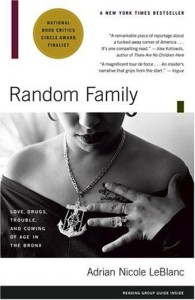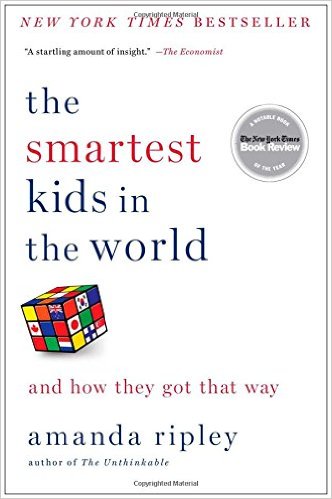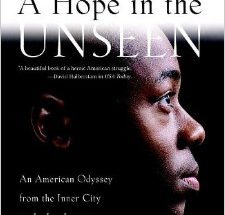Adrian Nicole LeBlanc’s Random Family explores a range of themes: cyclical poverty, failure of the social services system, the value of education and inequality of women and girls, just to name a few. But at its core, Random Family is an elegant story about people and their day-to-day survival, offering a glimpse into the joys and challenges they experience as they move through their world along the city’s margins in the South Bronx.
Readers first meet Coco, the young woman who carries the book from beginning to end, in Chapter Three. She spots a charismatic young man named Cesar hanging around her neighborhood in the Bronx, and the two enter in to a deep and complex relationship. They eventually have two daughters between them. Coco raises the girls (along with three other children from different fathers) on her own while Cesar serves out a jail sentence for the accidental murder of his best friend.
From there, readers are introduced to the constellation of friends and family—some are blood relatives, others are not—who give, take, and share the money, resources and companionship necessary to survive in what the author describes in the book’s author’s note as “this particular American experience of class injustice.”
The individuals in this book have been described by both the author and observers as strikingly ordinary. While their circumstances and the challenges they face may be shocking to many readers, LeBlanc herself stated that “the greatest ethical violation that I committed was to be surprised,” speaking at the New York Public Library in April 2014. “That’s sort of what I feel, as an intelligent, educated, information-gathering person, why was I so surprised again and again and again at the malfunction of the system?”
LeBlanc said that she encountered a number of people who were worse off than Coco, a single mother of five who endured a lifetime of abuse, poverty and violence, as she was reporting this book. In chapter after chapter, Coco’s experiences with a dysfunctional welfare system, ill-equipped homeless shelters, inaccessible healthcare and under-resourced schools illustrate that the state and federal support systems were broken. In many cases, interactions with these agencies perpetuated the challenges she was facing rather than correct them. The book chronicles over ten years of the subjects’ lives, starting in the mid-1980s. Reading it today begs the question: how much has really changed?
Aside from providing valuable insight into overlooked social injustices, Random Family is an extraordinary example of immersion reporting and journalism. LeBlanc executes the book with precision and painstaking detail. Scenes are depicted with neutrality and clarity. Readers never feel the author’s presence; rather, the individuals represented in the book tell the story themselves. LeBlanc skillfully blends a number of storytelling techniques–letters, quotes, vivid descriptions of scenes and direct, honest writing—to deliver a narrative that is both educational and captivating. Random Family is evidence that time, patience and familiarity are valuable and powerful reporting tools.




